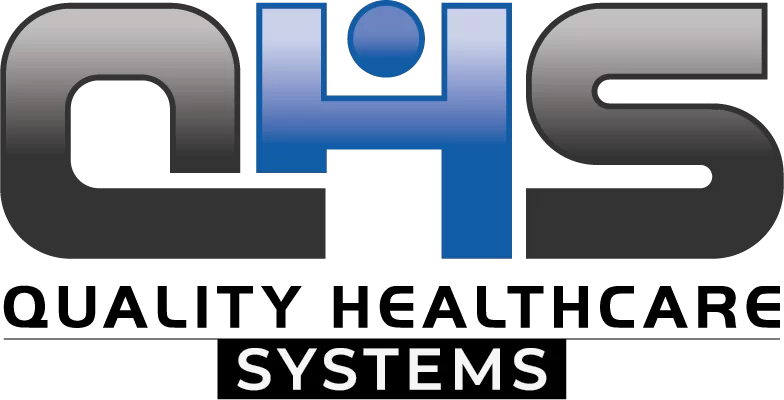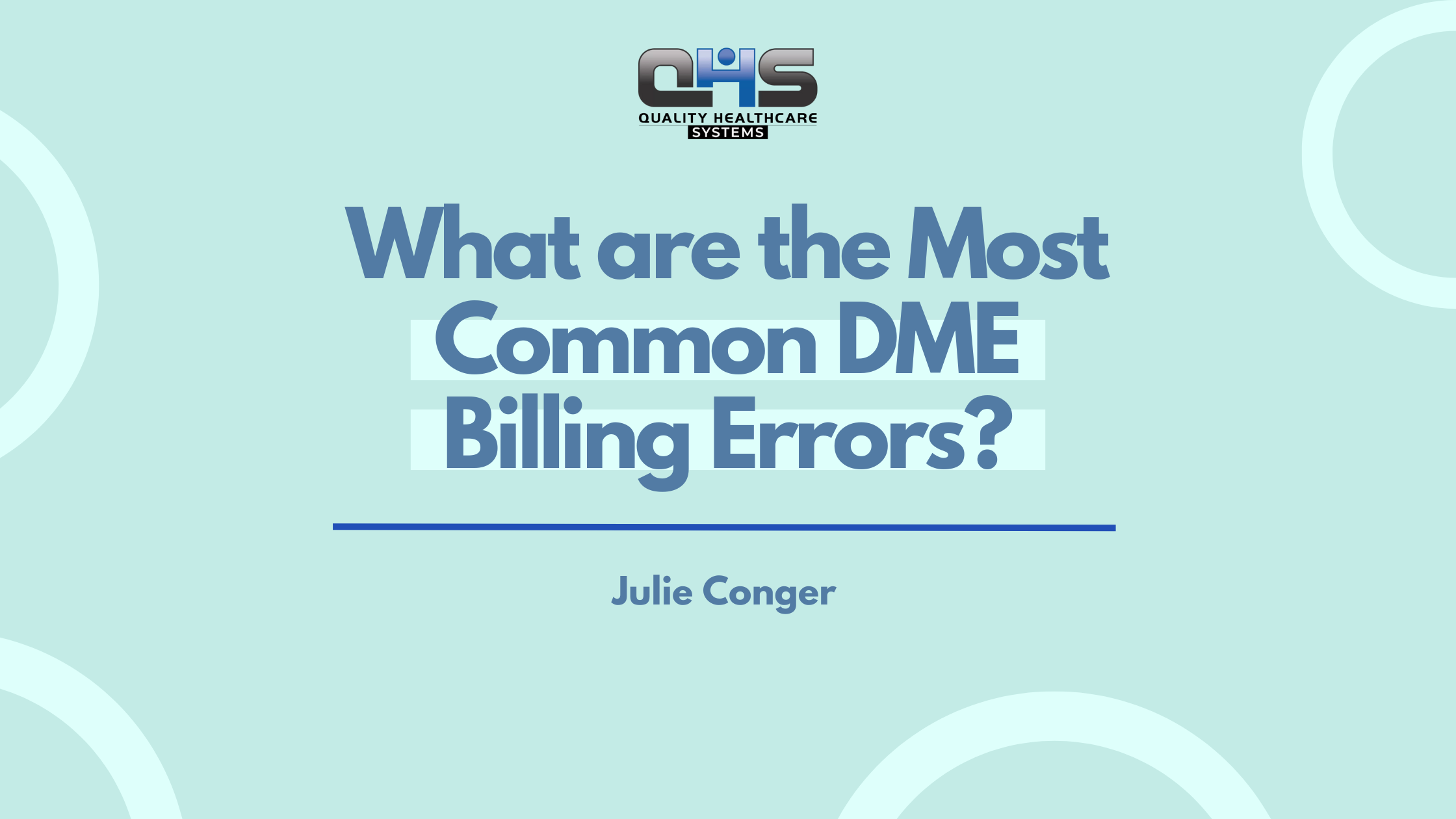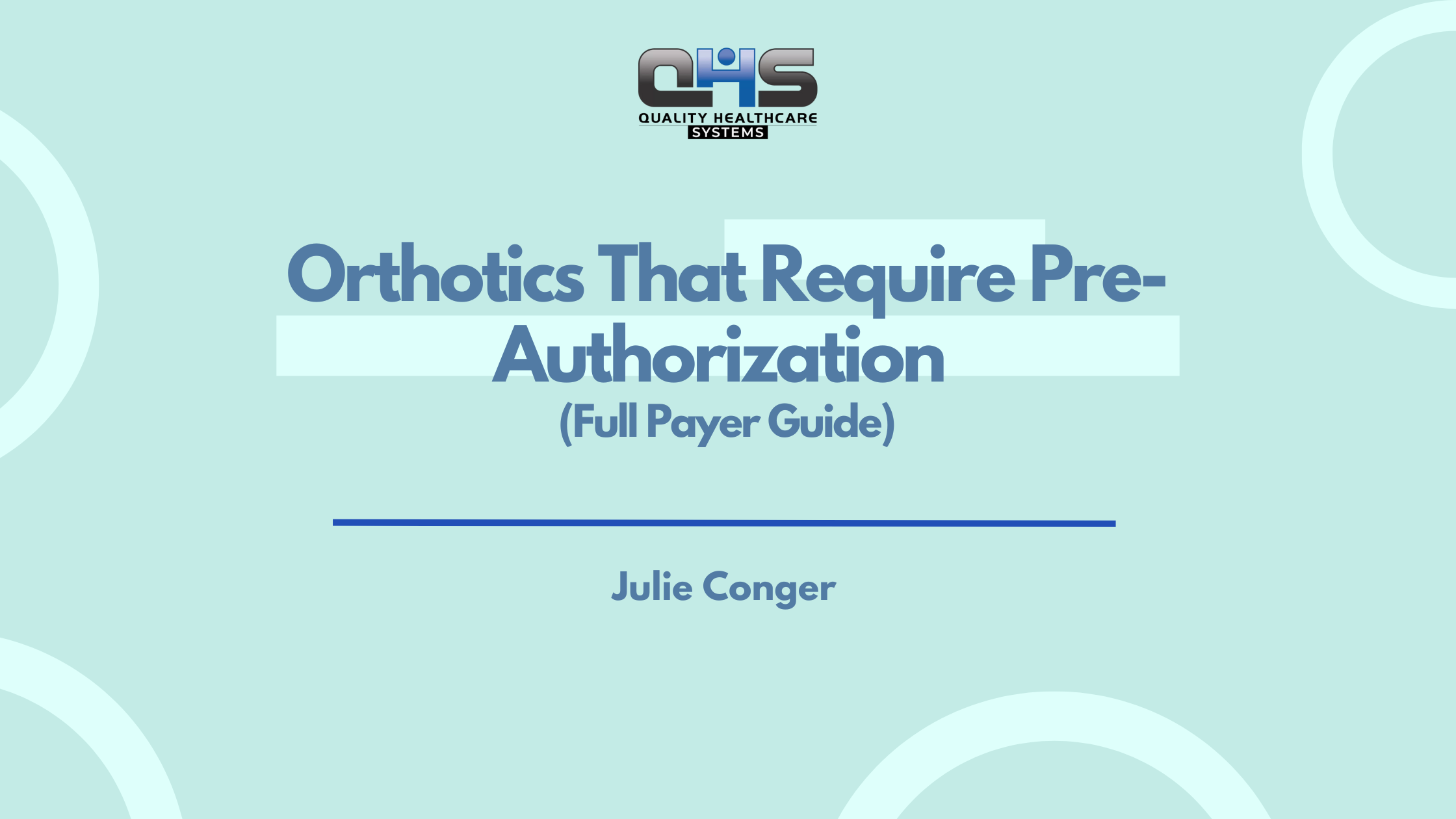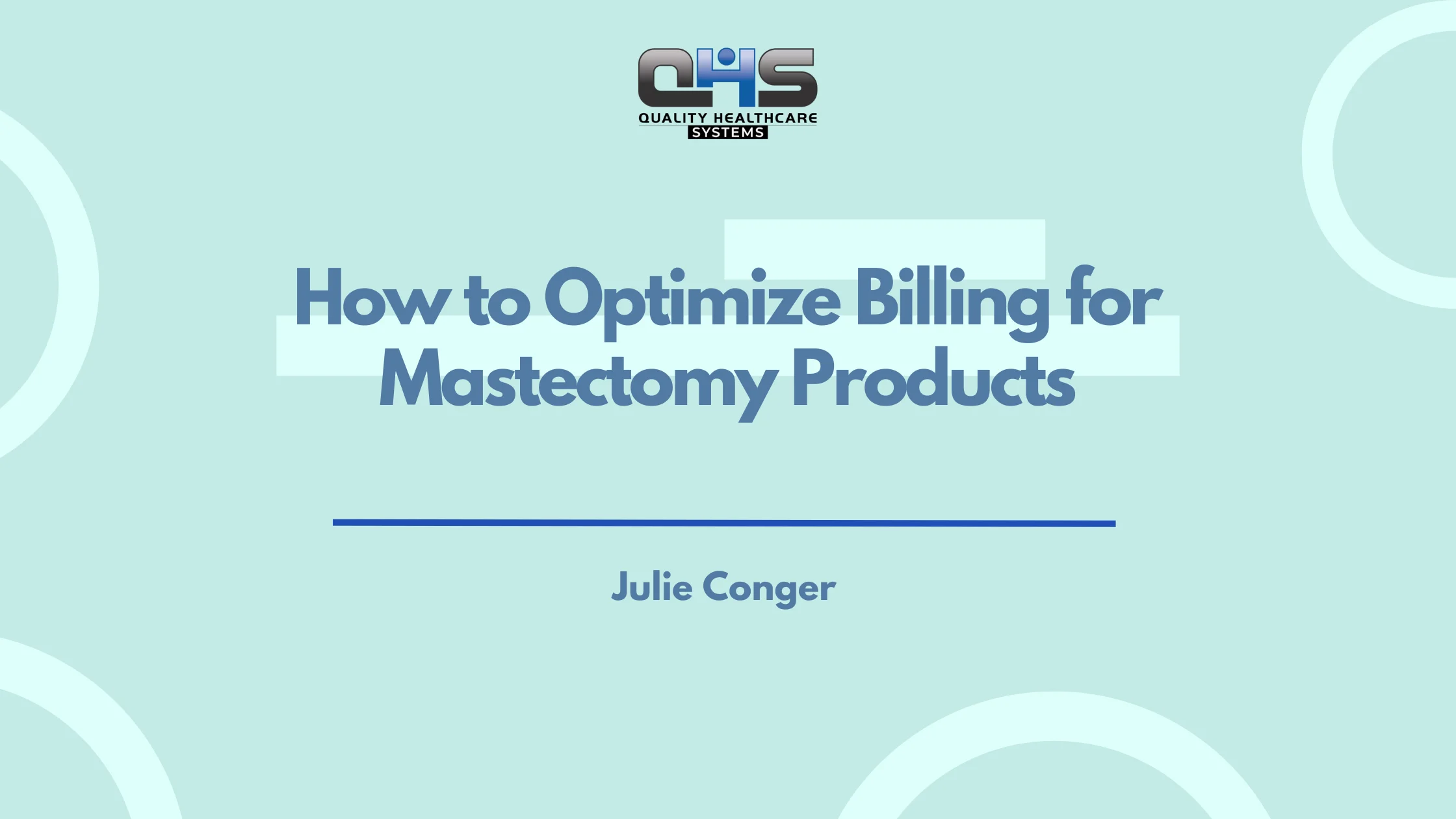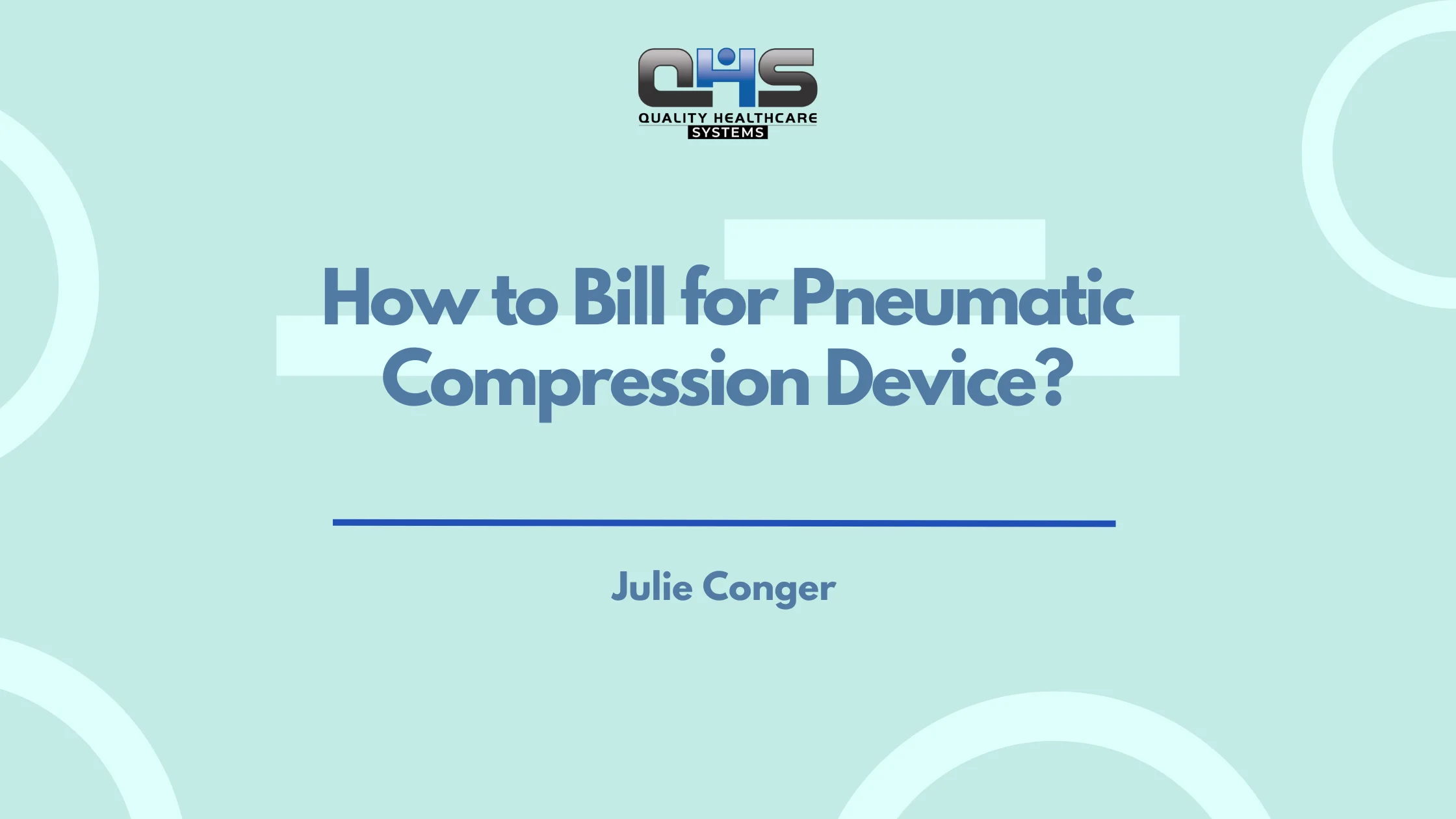Billing for Durable Medical Equipment (DME) plays a critical role in ensuring smooth healthcare operations and maintaining financial stability for providers. However, this process is often prone to errors that can lead to claim denials, delayed payments, compliance risks, and unnecessary financial strain. In this blog, we’ll explore the most common DME billing errors and provide actionable strategies to help you prevent them.
1. Incomplete or Incorrect Documentation
Documentation errors are among the most frequent causes of claim denials in DME billing. Insurance companies require comprehensive records to justify the medical necessity of the equipment being provided.
Example:
A claim for a CPAP machine is denied because the supporting medical necessity documentation was either incomplete or missing entirely.
Why It Happens:
Missing physician orders, insufficient patient medical history, or failing to meet payer-specific requirements can lead to such errors. Providers often struggle with tracking and organizing multiple documents for each claim.
How to Prevent:
- Develop a standardized checklist for required documentation.
- Implement a documentation management system to ensure all necessary files are included.
- Conduct regular audits of submitted claims to identify and address recurring documentation gaps.
- Train staff on payer-specific documentation rules and expectations.
- Hire outsource denial management services to get rid of incomplete documentation once and for all.
Taking these steps ensures that your claims meet the standards required for quick and accurate reimbursement.
2. Errors in Coding
Using the wrong CPT, HCPCS, or ICD codes can disrupt the billing process and lead to denials or underpayment. Coding requires precision and up-to-date knowledge of changes in billing regulations.
Example:
A wheelchair is billed with an incorrect HCPCS code, causing the claim to be rejected and requiring resubmission.
Why It Happens:
Errors often stem from insufficient coding knowledge, lack of updated coding references, or simple human oversight.
How to Prevent:
- Stay informed about coding updates through workshops and professional associations.
- Use automated billing software with built-in error-checking capabilities to minimize manual errors.
- Perform regular quality checks on coding accuracy before claims are submitted.
Proper coding practices not only prevent errors but also reduce the time spent on reworking rejected claims.
Make your billing processes error-free with professional DME billing services. Get started now!
3. Missing Prior Authorizations
Many DME items require prior authorization from payers before the equipment can be provided. Missing this crucial step often results in denials, even if the claim is otherwise accurate.
Example:
A claim for oxygen therapy equipment is denied because prior payer approval wasn’t secured before dispensing the item.
Why It Happens:
This issue often arises due to poor tracking systems or a lack of understanding about payer-specific prior authorization requirements.
How to Prevent:
- Verify authorization requirements for every DME item and payer before dispensing equipment.
- Use tracking tools or software to monitor prior authorization status.
- Train staff to recognize when prior authorization is required and to follow up on pending requests.
By incorporating these strategies, you can reduce delays and improve your claim approval rates.
4. Incorrect Patient or Payer Information
Small errors in patient demographics or insurance details can lead to claim rejections. These seemingly minor mistakes often result in significant delays in payment.
Example:
A claim is rejected because the patient’s insurance ID number was entered incorrectly during the billing process.
Why It Happens:
Data entry errors or failing to double-check information during intake are common culprits.
How to Prevent:
- Double-check patient and insurance details during the intake process.
- Use billing systems with verification features to catch errors before submission.
- Encourage staff to review claim forms carefully before they are submitted to payers.
Correcting these errors upfront saves time and ensures smoother claim processing.
5. Failure to Meet Timely Filing Deadlines
Each insurance payer has strict deadlines for submitting claims. Missing these deadlines results in outright denials, leaving providers unable to collect payments for rendered services.
Example:
A claim for a hospital bed is denied because it was filed months after the allowable submission window.
Why It Happens:
This often occurs due to poor tracking systems or a lack of awareness about filing deadlines for specific payers.
How to Prevent:
- Use automation tools or small practice billing software with built-in reminders for approaching deadlines.
- Assign a dedicated team member to monitor and manage claim submission timelines.
- Establish an internal workflow that prioritizes claims nearing their filing deadlines.
Timely filing is critical to maintaining steady cash flow and minimizing revenue loss.
6. Duplicate Billing
Submitting multiple claims for the same service or equipment can trigger audits, raise compliance concerns, and delay reimbursements.
Example:
A duplicate claim for a nebulizer rental is flagged during payer review, leading to unnecessary delays in payment.
Why It Happens:
Duplicate billing often occurs when claims are not properly tracked or when resubmissions are made without verifying the status of the original claim.
How to Prevent:
- Maintain a comprehensive claims tracking system.
- Verify the status of previously submitted claims before initiating resubmissions.
- Train staff to recognize and avoid duplicate billing scenarios.
A structured billing process ensures accuracy and compliance, avoiding the complications of duplicate claims.
7. Failure to Verify Patient Eligibility
Submitting claims without confirming a patient’s insurance eligibility is another common mistake that can lead to denials or non-payment.
Example:
A patient receives a hospital bed, but their insurance coverage had lapsed, resulting in a denied claim.
Why It Happens:
This often happens due to skipped verification steps during the intake process or outdated insurance records.
How to Prevent:
- Verify insurance eligibility at every patient encounter, particularly for recurring patients.
- Use online portals or automated tools provided by payers to confirm patient coverage.
- Set up reminders to periodically re-verify insurance details for long-term patients.
Regularly verifying eligibility ensures that claims are processed smoothly and reduces the likelihood of denial.
Having eligibility verification issues? Get started with our provider credentialing services!
8. Lack of Training for Billing Staff
Untrained or undertrained billing staff are more likely to make mistakes, from coding errors to missed filing deadlines. These errors can add up, leading to lost revenue and compliance issues.
Example:
Incorrect coding for incontinence supplies leads to repeated denials, requiring extensive follow-up.
Why It Happens:
Billing staff may not receive regular training or updates on industry regulations, payer guidelines, or coding changes.
How to Prevent:
- Invest in regular training sessions and certifications for billing staff.
- Provide access to updated payer guidelines and coding resources.
- Conduct periodic reviews of staff performance to identify training needs.
Educated staff are key to minimizing errors and ensuring compliance in billing operations.
FAQs
What are the most common DME billing errors?
Common errors include incomplete documentation, incorrect coding, missed prior authorizations, duplicate billing, and failing to verify patient eligibility.
How can I prevent DME claim denials?
Prevent denials by ensuring accurate documentation, verifying patient insurance eligibility, obtaining prior authorizations, and meeting filing deadlines.
What tools can help streamline DME billing?
Billing software with features like automated error-checking, claims tracking, and deadline reminders can improve accuracy and efficiency.
Why is staff training important for DME billing?
Trained staff are less likely to make coding or documentation errors, ensuring compliance and reducing claim rejections.
How often should I review my billing processes?
Regularly reviewing billing workflows, at least quarterly, helps identify inefficiencies and ensures your team is adhering to best practices.
Conclusion
DME billing errors can lead to significant disruptions in cash flow and compliance risks. By addressing common issues such as incomplete documentation, coding errors, and missed deadlines, you can ensure smoother claim processes and maintain financial stability. Investing in training, technology, and systematic workflows will help your practice prevent errors and maximize efficiency.
